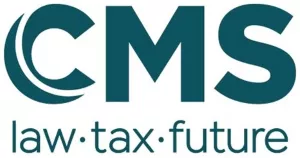On July 17th 2020, law n° 1.494 of July 8, 2020 was published in the Principality's Official Journal, introducing into Monegasque law a new offence of fraudulent bankruptcy or aggravation of insolvency under articles 368-1 to 368-3 of the Criminal Code.
In doing so, the Principality of Monaco adopted a legal framework close to those existing in France and in Europe, with a view to ensure security for investors in the Principality, in particular by strengthening the effectiveness of the financial ruling determining the existence of a debt.
The new incrimination aims at repressing "the fraud resulting from the various acts of impoverishment carried out by the debtor in order to claim his insolvency and thus prevent the recovery of the debt on his property" (cf. Explanatory statement of the law).
Less than a year after its entry into force, CMS has decided to review the characteristics of this new offence on which Monegasque case-law has not yet ruled but which is repetitively the subject of doctrinal debates in France and in Europe.
In this spirit, we shall succesively consider the constituent parts of the offence (1), its applicable sanctions (2) and the time-limit for its prosecution (3).
1. On the constituent parts of the offence
To be constituted, the offence requires the fulfilment of material acts of organization or aggravation of insolvency (A) and the intention to override the enforcement of a financial ruling (B).
A. The substantive parts of the offence
a. The existence of a judicial conviction of a pecuniary nature (financial ruling)
In the first place, the constitution of the offence of fraudulent organization of insolvency presupposes that a ruling was rendered before the prosecution was initiated and that the amount of the debt obligation was determined.
It should be noted that it is irrelevant that the time-limits for appeal have not expired or that review procedures are still open.
Secondly, the conviction must be of a financial nature and must have been rendered by criminal courts or civil courts in matters of tort or maintenance.
The financial rulings and the court-approved agreements requiring the payment of benefits, subsidies or contributions to the costs of the married life are treated in the same way as sentences to pay maintenance.
In the particular case of the de jure or de facto director of a legal entity, the offence covers sentences of a financial nature rendered in criminal and tort matters.
In this case, the offence only protects creditors whose the claims are not based on a contract, but on a misconduct that led to the civil or criminal liability of its offender.
b. The existence of an act of impoverishment or concealment
Thirdly, the characterization of fraudulent bakruptcy of insolvency requires the fulfilment by the debtor of any act tending to :
- Increase the liabilities or decrease the assets of his estate, or ;
- Decrease or conceal all or part of his income, or ;
- Conceal some of his assets.
It should be noted that it does not matter whether this act was committed before or after the ruling was rendered.
c. The recognition of an insolvency or an insolvency organization
Fourthly, the Court will have to determine the insolvency of the debtor or at least an insolvency organization. As the offence is of a "formal" nature, the occurrence of the feared result (i.e. the impossibility for the debtor to pay the debt to which he is bound by the financial ruling) is not required to lead to his conviction.
B. The mens rea
With regard to the mens rea (intention), it is required that the disputed acts were committed in order to avoid the enforcement of the financial ruling.
2. The sanctions
The principal offender is liable to a sentence of one to three years' imprisonment and a fine of 18,000 to 90,000 euros.
It should be noted that the lawmaker provided for the possibility for the criminal courts to order the accomplice of the offence to pay, together with the principal offender, the pecuniary obligations imposed on the latter by the financial ruling which determined the debt. However, this solidarity for payment cannot exceed the funds or the market value of the assets received whether or not in return for payment from the principal offender.
3. The time-limit for prosecution
The time-limit for prosecution is three years following the date of the financial ruling of which the debtor wished to evade.
However, in the case of acts intended to organize or aggravate the debtor's insolvency committed after the so called financial ruling, the time-limit for prosecution only runs from the date of the last act.
To this day, no conviction has been handed down yet by the criminal courts for this offence given its recent codification.
Nonetheless, this notion will certainly occupy the next judicial debates, partly because some of Monegasque lawyers previously complained of the inadequacy of the law in this matter.
The content of this article is intended to provide a general guide to the subject matter. Specialist advice should be sought about your specific circumstances.


